Best Corporate Wellness Software to Foster Wellness in the Workplace
There are numerous corporate wellness software tools that can help organizations build a healthy and happy workforce.
Wellable

Wellable is a comprehensive wellness software that empowers organizations to create engaging employee well-being programs. Clients partner with Wellable to support the holistic well-being of employees, strengthen organizational culture, and improve key workplace productivity metrics. Wellable offers a modular ecosystem of wellness technologies and services, enabling clients to choose the products that align with their needs and goals.
Key Features:
- Customizable wellness program
- Holistic approach to well-being
-
Range of solutions including:
- Wellness challenges
- Multimedia educational content
- On-demand and on-site fitness classes
- On-demand mindfulness classes
- Rewards and recognition
- Health coaching
- Seminars
Organizations That Use This Software:
- Blue Cross Blue Shield Arkansas
- Buffalo Bills
- Boston Consulting Group
Pricing: Starting at $0.60 PUPM (per user per month)
Experience Wellable's
Award-Winning Wellness Platform
Experience Wellable's Award-Winning Wellness Platform
Thoughtfully-designed, holistic solutions that work for employers and employees. No compromises.
Headversity

Headversity is a preventive assistance software that provides proactive, on-the-job mental health training tools. It offers educational experiences that take five minutes or less, seamlessly fitting into employees’ workdays. Through daily practice tools, lessons, and gamified interactives, Headversity empowers employees to build resilience, prevent illness, and nurture their mental health.
Key Features:
- Personalized training
- 150+ video and audio lessons
- Extended access to family members and dependents
Organizations That Use This Software:
- Shell
- First Group America
- OMERS
Pricing: Not publicly available
Bonusly
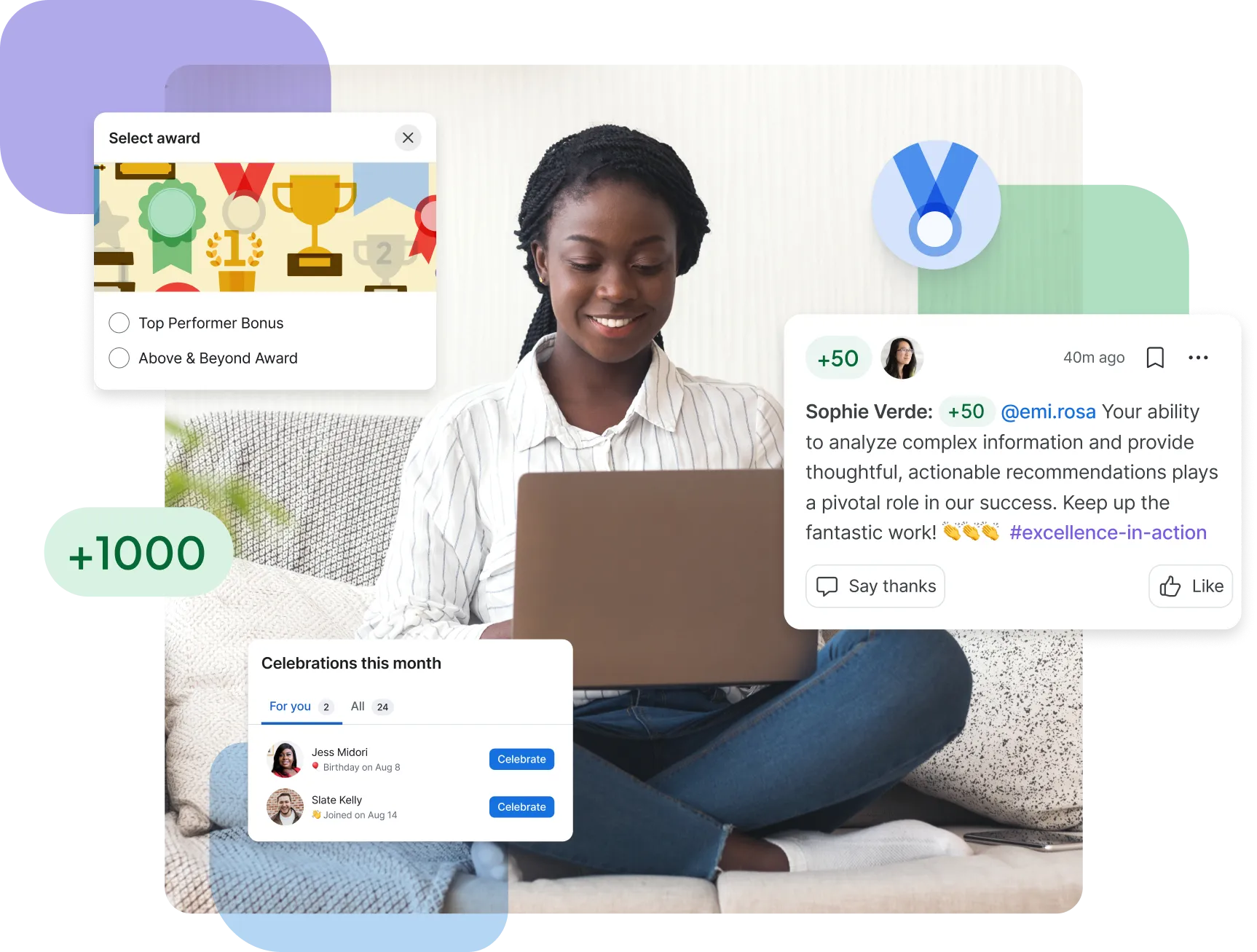
Bonusly enables team members to publicly acknowledge and reward each other’s contributions and achievements. Each employee is allocated a monthly allowance to give small bonuses to colleagues who have demonstrated exceptional efforts. The public feed displays all recognitions, enhancing social connectedness and overall well-being while providing a sense of purpose to aim for excellence.
Key Features:
- App integrations (Slack, Microsoft Teams, Zapier, etc.)
- Social feedback portal
- Recognition tracking
Organizations That Use This Software:
- Greenhouse
- Invision
- Wrike
Pricing: Starting at $2.70 PUPM
Headspace
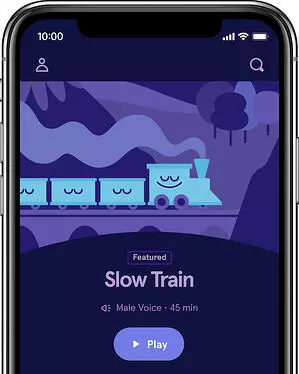
As mental health issues in the workplace persist, Headspace helps employees achieve better mental well-being. This science-backed software has a wide array of meditations and exercises to assist users with everything from stress management and smoking cessation to sleep support. The Headspace for Work team can provide comprehensive dashboards, engagement resources, and measurement tools to monitor employee well-being and establish a wellness program with ease.
Key Features:
- Employee portal
- Dashboard and reporting
- Scientifically-supported
Organizations That Use This Software:
- Western Union
- Booking.com
- Boston Medical Center
Pricing: Starting at $5.83 PUPM
Blueboard
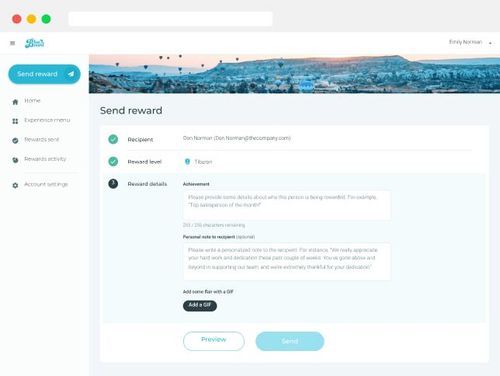
Blueboard is a unique employee rewards platform that offers personalized, hand-curated experiences to recognize and incentivize top-performing individuals. From VIP concerts to a bucket list of travel adventures, their experiential rewards create a memorable employee recognition program that generates excitement and engagement. These meaningful experiences promote work-life balance, rejuvenation, and a sense of fulfillment, fostering a culture of wellness within the organization.
Key Features:
- Slack and Microsoft Teams integration
- Automated rewards and feedback
- Real-time insights
Organizations That Use This Software:
- Mimecast
- GoPro
- salesforce.org
Pricing: Not publicly available
Kona

Kona is a worker wellness software that leverages real-time emotional health data to effectively avoid and address burnout. It contributes to increased workplace teamwork by motivating team participation through meaningful conversations. Employers can rely on Kona to track and support wellness-improvement initiatives that bring benefits to the entire organization. At Kona, empathy and work-life balance are not optional; they are must-haves.
Key Features:
- Customizable support workflows
- Daily check-ins and live support
- Real-time health analytics
Organizations That Use This Software:
- Canva
- Oyster
- Veriff
Pricing: One team: $99/month; Department: $79/month per team; Company: $6/month per user
Forma
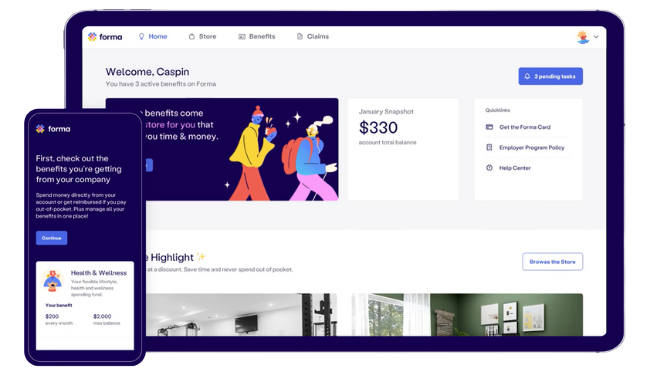
Forma challenges a one-size-fits-all approach to employee well-being through its flexible benefits software. It enables companies to provide competitive benefits packages while providing employees with greater choice in how they utilize their allowances. Forma's suite of products includes Lifestyle Spending Accounts, Health Spending Accounts, Health Reimbursement Arrangements, Flexible Spending Accounts, and more. By switching to customizable spending accounts, organizations ensure that benefits align with each employee's needs and preferences, resulting in a truly personalized and valued wellness experience.
Key Features:
- AI-driven personalization
- 24/7 human support
- Benchmarking and analytics
Organizations That Use This Software:
- Stripe
- Trip Advisor
- Collective Health
Pricing: Not publicly available
Starling

Starling offers early intervention for stress, depression, and anxiety to enhance efficiency, lower absenteeism, and prevent burnout. This software helps firms save money on health care by offering prompt, personalized, and proactive support to employees in need. Starling also offers a Return-to-Health employee benefit to help employees who are on leave due to a physical or mental ailment return to work faster.
Key Features:
- Digital cognitive behavioral therapy
- 10-minute mental fitness training sessions
- Leadership training
Organizations That Use This Software:
- National Head Start Association
- Ontario Teachers Insurance Plan
- SchoolMint
Pricing: Not publicly available
Holisticly
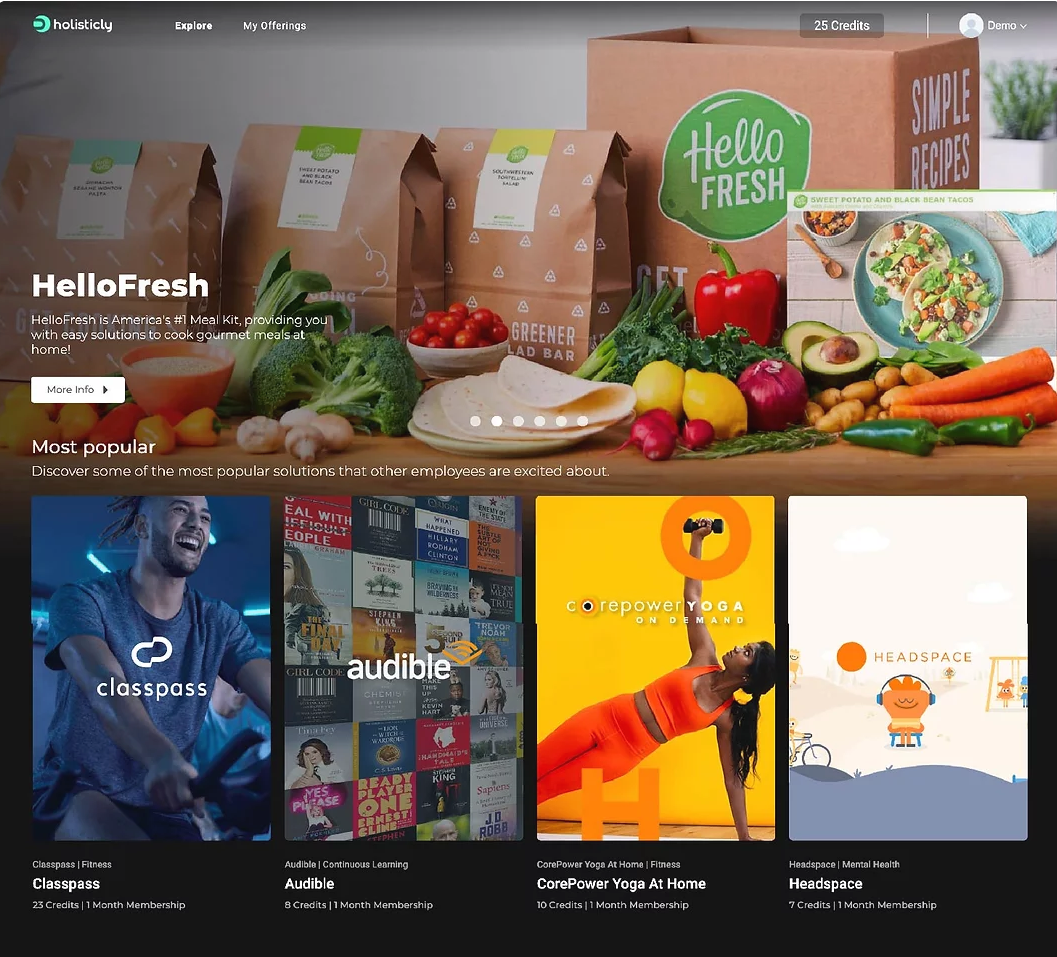
Holisticly's employee wellness software streamlines the distribution of monthly wellness credits to employees, along with a diverse selection of pre-approved exercise and mental health products such as Classpass, Calm, Headspace, and Audible. With their centralized platform, Holisticly consolidates well-being resources at employees' fingertips, enabling individuals to personalize their wellness journeys according to their preferences and needs.
Key Features:
- Engagement and utilization insights
- Only pay for what employees use
- No minimum user count
Organizations That Use This Software:
- Resquared
- FinGoal
- Losant
Pricing: Starting at $129/month for up to 50 employees
Bright Breaks

Bright Breaks addresses issues such as aches, pains, tensions, and stress caused by prolonged sitting at a desk in a remote or hybrid environment. This software automates the scheduling of seven-minute wellness breaks with a wide range of content and over 300 live breaks weekly. Bright Breaks not only improves employee well-being but handles heavy lifting involving the implementation and maintenance of wellness initiatives.
Key Features:
- Scientifically-supported
- Reward incentives
- On-demand library
Organizations That Use This Software:
- Air Canada
- PandaDoc
- The Salvation Army
Pricing: Starting at $9,995/year
Key Features of Corporate Wellness Software
Corporate wellness software offers tools that encourage participation, track progress, and promote healthier lifestyles. The following key features make corporate wellness software an integral part of workplace wellness programs.
Gamification & Challenges

Gamification introduces elements of play, competition, and achievement into wellness programs, making the pursuit of health fun and engaging. By setting up challenges, such as daily step contests or weekly mindfulness streaks, employees are encouraged to participate in friendly competition. This drives engagement and fosters a sense of camaraderie among team members as they work towards common goals.
Activity Tracking
Activity tracking allows users to monitor various health metrics and activities. This can include step counters, sleep logs, nutrition tracking, and more, offering a comprehensive view of an employee’s lifestyle. By integrating with popular health apps and wearable devices, corporate wellness software makes it easy for users to sync their data in one place, providing a seamless way to monitor progress and stay motivated.
Rewards & Recognition Systems

To further incentivize participation, corporate wellness software should be equipped to integrate a rewards and recognition system. Recognition can take the form of points systems, leaderboards, peer-to-peer shoutouts, or virtual badges to acknowledge employees' efforts and achievements. Rewards are a tangible form of recognition and might range from small perks or gift cards to significant prizes for top performers or most improved participants. These systems create motivation while acknowledging the hard work employees put into maintaining their health, thereby reinforcing positive behaviors and outcomes.
Reporting & Analytics

Corporate wellness software provides comprehensive reporting and analytics tools that offer insights into program participation, progress towards health goals, and overall engagement levels. These data points allow organizations to assess the impact of their wellness programs, identify areas for improvement, and tailor future initiatives to better meet the needs of their employees. By leveraging these insights, companies can ensure their wellness programs are beneficial to employees and aligned with broader organizational objectives.
Benefits of Corporate Wellness Software
1. Enhances Employee Well-Being
Many corporate wellness software solutions provide tools for promoting healthy habits, tracking progress, and offering personalized wellness programs. By implementing such software, organizations proactively address the well-being of their employees, leading to improved health outcomes. Through health education and initiatives, organizations empower employees to take charge of their well-being.
2. Alleviates Stress
By educating employees on stress management techniques and helping them practice coping strategies, corporate wellness software can play a pivotal role in alleviating employee stress. Workplace stress frequently results in burnout, often stemming from a lack of work-life balance. Wellness software encourages employees to care for all aspects of their well-being rather than solely prioritizing professional contributions.
3. Boosts Engagement & Productivity
Employees are engaged when their workplace feels more like a community than a production hub. Wellness software allows employers to recognize, reward, and support the well-being of employees, demonstrating genuine care and cultivating motivation within the workforce.
When employees feel their best, they perform their best. Employees with excellent well-being are less hindered by physical ailments, mental health issues, financial stress, feelings of loneliness, and lack of purpose. Wellness software equips employees with resources to stay resilient during difficult times and confidently bring their best selves to work, boosting overall productivity.
4. Supports Employee Retention
As the modern workforce continues pursuing more than just job security, corporate wellness software is a tool to ensure employee loyalty and satisfaction. Eighty-nine percent of US employees who work for a company with a wellness program report being happy with their job and would recommend it to a friend. Through recognition, rewards, and well-being initiatives, employees feel valued for their efforts and supported in their health journeys. This increases job satisfaction and employee retention.
5. Improves Morale
By prioritizing employee well-being, employers demonstrate that they value their employees as individuals, not just as workers. Through wellness initiatives, employees learn to take ownership of their health, develop problem-solving skills, and boost their self-esteem. These benefits contribute to improved employee morale, providing a sense of fulfillment and engagement both in and out of the workplace.
6. Enhances Employer Brand
By investing in corporate wellness software, companies position themselves as caring and forward-thinking employers. They demonstrate a proactive approach to addressing modern work challenges, such as stress, burnout, and the need for work-life balance. This commitment to wellness helps attract top talent who are seeking employers that offer more than just a paycheck but a supportive and engaging work environment.
How to Choose the Right Corporate Wellness Software
To select corporate wellness software that meets employee needs and aligns with organizational goals, companies must take a thoughtful approach.
Assessment
Conducting a needs assessment through employee interest surveys or focus groups can help identify areas of interest, such as mental health support, fitness programs, or nutritional guidance.
Wellable's Personal Wellness Assessment (PWA) can be a valuable tool in gauging employees’ well-being needs and gaps in support. By leveraging the insights from the PWA, companies can select software that meets the unique demands of their workforce, ensuring higher engagement and effectiveness.
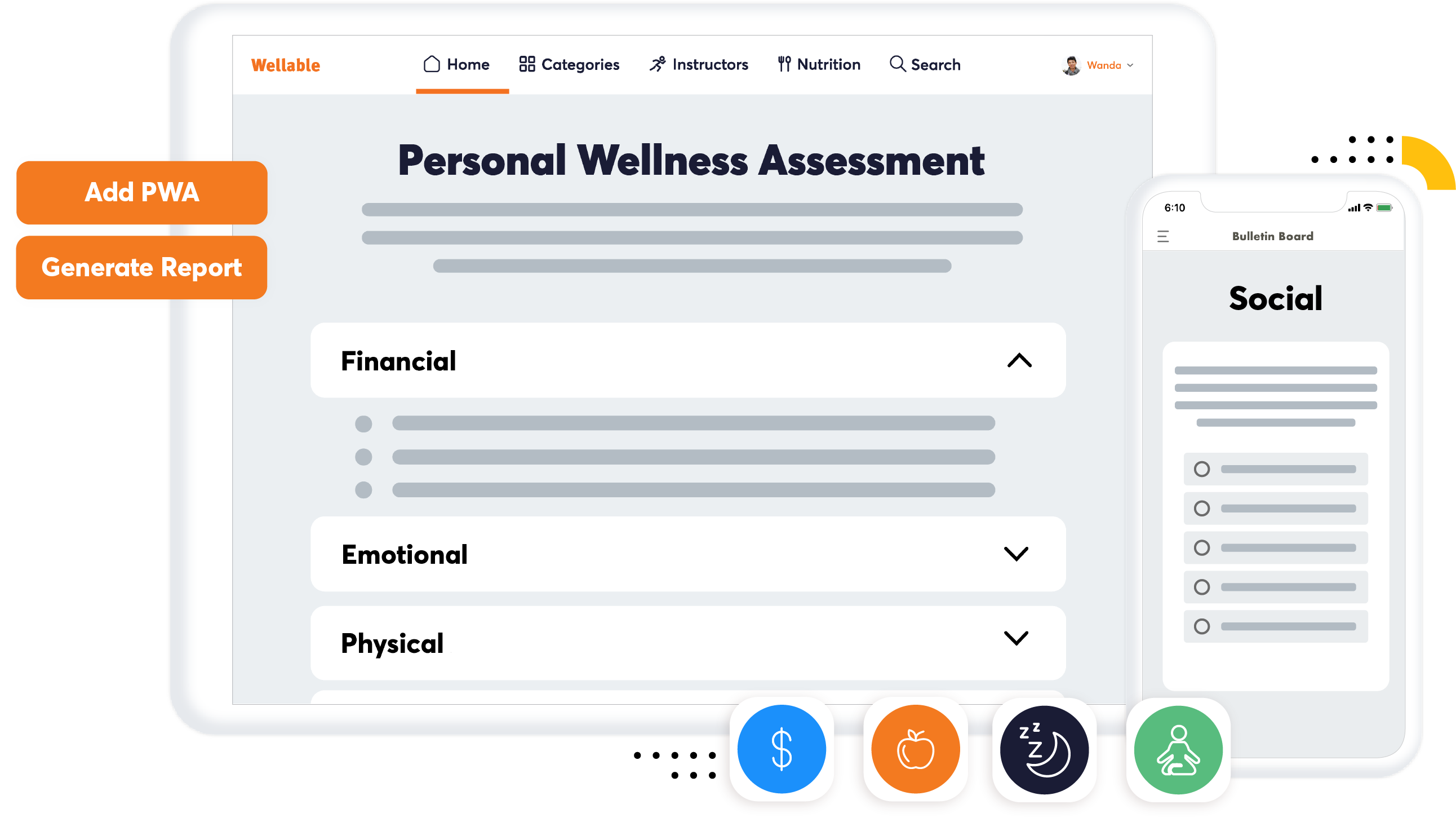
Budget Considerations
The cost of corporate wellness software varies, with pricing models that can include
- Per employee per month (PEPM)
- Annual subscriptions
- Tiered pricing based on the number of users or features accessed
It’s important to understand which pricing structure complements the budget. Consider not just the initial cost but also the potential return on investment in terms of improved employee productivity, engagement, and retention.
Ease of Use
Software with an intuitive interface, easy navigation, and simple access to key features will encourage more employees to utilize the program regularly. Look for platforms that offer a user-friendly experience across all devices, including smartphones, tablets, and computers to accommodate diverse tech habits.
Integration Capabilities
The ability to connect with the tools and apps employees already use daily (such as fitness trackers, health monitoring apps, and HR systems for tracking leave and benefits) can significantly enhance the user experience and the accuracy of health tracking and reporting. Assess the software’s compatibility with current systems to ensure smooth implementation and operation.
Customer Support
Customer support is an often overlooked but critical factor. Look for providers that offer implementation assistance, user training, and ongoing technical support. Responsive customer service can help resolve any issues quickly, ensuring that the wellness software runs smoothly and effectively. Additionally, a provider that offers strategic guidance, best practices, and program optimization advice can be a valuable partner in achieving wellness objectives.





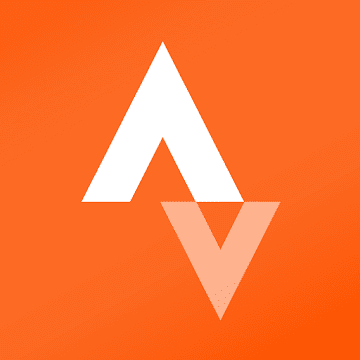
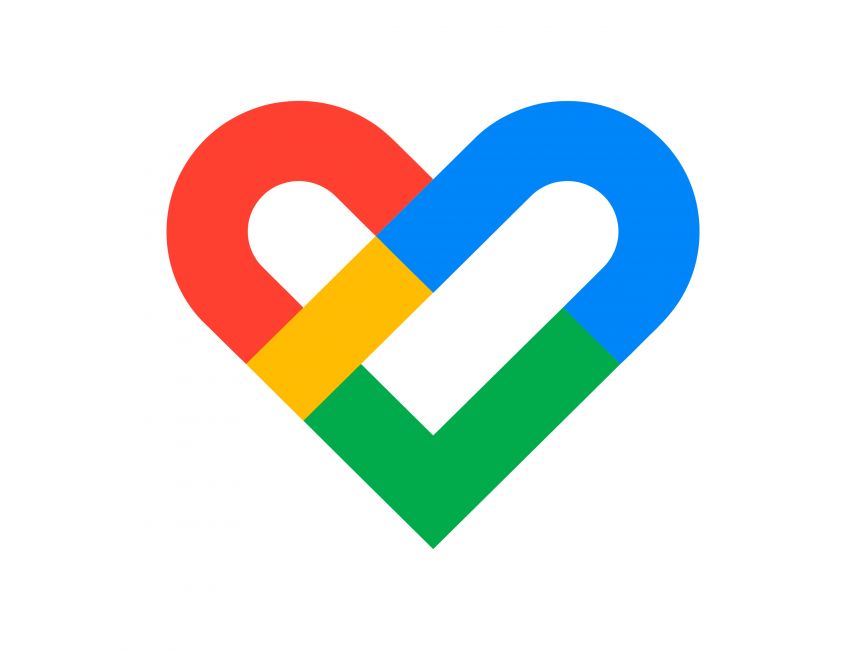


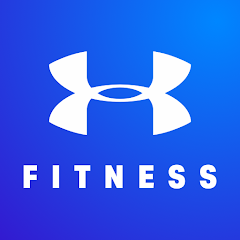
Social Components
The power of community should not be underestimated in corporate wellness programs. Features like chat functions and social feeds within the software encourage peer support and interaction, building a network where employees can share tips, celebrate achievements, and offer encouragement. This sense of belonging is crucial for mental and emotional well-being, making the social components of these platforms a key element in building a positive and inclusive workplace culture.